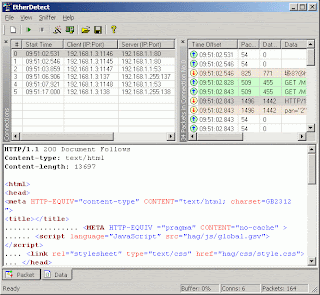Most computers are connected to networks of telecommunication devices. These networks allow computers to communicate with each other over ports of communication. Port sniffing is a process of reading and interpreting data that is transferred on a specific network communication port. This process is a useful tool for verifying and validating data between computers.
It is important to perform port sniffing operations on newly developed software. This is a good method of validating data accuracy, volume, and consistency throughout a software application. Port sniffing software allows a testing team to view the data that is transmitted over a network device.
Security analysts typically rely on port sniffing programs to determine software vulnerabilities. These analysts must inspect software applications for proper encryption and potential unwanted data exposure. Sniffing tools give them a method determining if critical information is passed over a public network. This information includes passwords, systems identification, and port addresses. If this data is sent unencrypted it could be potentially harmful for an organization.
Port sniffing is also available on many network monitoring software programs. This real-time port sniffing provides a view into the type of messages transmitted throughout a network. A sniffing program is an good tool for reviewing data that is transferred in and out of an organization.
When data is transmitted over a network it is typically split in the form of data packets. This process is performed to throttle messages to support network capacity. Each packet is sent over the network as an individual unit. Once it arrives on the receiving computer it is reassembled into a full message.
Packet sniffing is another form of port sniffing that verifies the size of information that is transmitted within a network. This is a good tool for capturing and analyzing the content of data based on predefined parameters for packets. Packet sniffing allows a detailed view of network monitoring and bandwidth usage analysis.
Sniffing programs can also read and interpret all types of ports. This includes USB, serial, and standard ethernet ports. These programs provide a means of troubleshooting issues between applications and external hardware devices.
This type of program can be used as a diagnostic tool. In the event of a hardware failure, a systems engineer can use port sniffing programs to determine the exact issues between devices. The software can read the data that is transmitted to a device. This provides valuable data to the engineer that can be used to determine where the failure is occurring. This information includes data speed, configuration, protocol, and format.

No comments:
Post a Comment